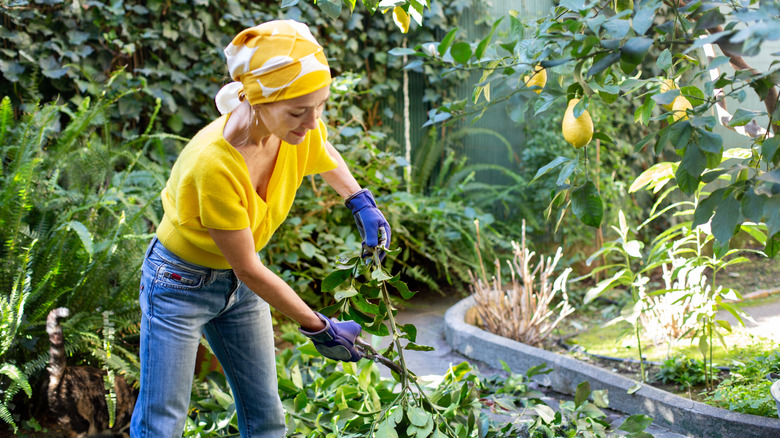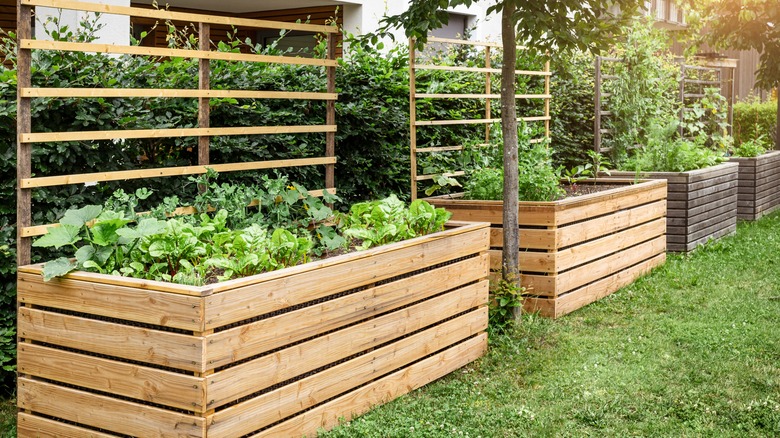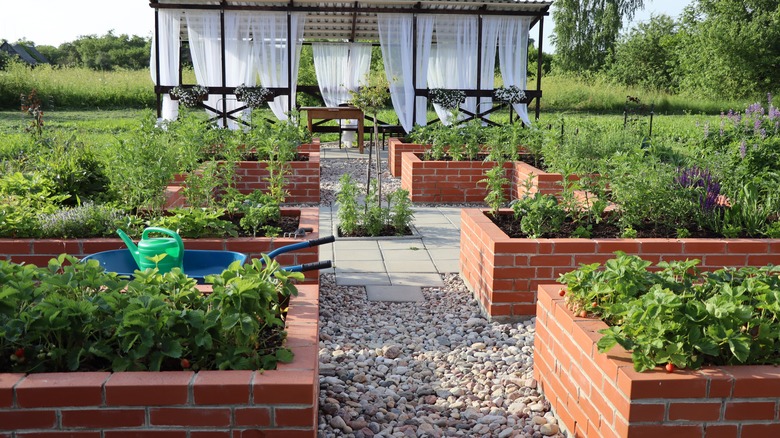The Traditional Kitchen Garden Design That Makes Growing Easier
If the idea of stepping out of your kitchen and into a garden to pick some fresh vegetables and herbs for the meal you're cooking tonight sounds like heaven, a potager might be the perfect garden for you. The potager originated in France — like so many other stylish and functional items — and has its roots in a humble kitchen garden meant to supply ingredients for the night's "potage" or soup. From this beginning, the concept of a potager grew to become a more formal garden that provides year-round beauty and sustenance. A well-designed potager is an extension of your kitchen and makes growing easier.
Ideally, your potager will be located close to your kitchen for easy accessibility. A traditional potager is walled off, but you can also use decorative fencing that fits in with your home's aesthetic. If you don't want to fence in your potager, you can enclose it around the outside edge with garden borders that are a statement piece.
How to design a potager
Once you've decided on the space where your potager will go, design with symmetry in mind. Start with a focal point, such as a fountain or special tree, to center your garden and add interest. From there, lay out pathways and garden beds in a symmetrical style. Your pathways can be formal or informal. If you're on a tight budget, you can simply leave them as dirt or grass. Many potagers have gravel pathways, and some that are more formal have stone or other elaborate materials. You can even use a gravel combo that will make your outdoor flooring shine.
Your raised bed material should also fit into your style. You can use commercially available wooden raised beds, or build your own from stone for a more old-world style. Build pathways around all sides of your raised beds so you can harvest from any angle. You can create a simple potager with four L-shaped raised beds, one in each corner, and a center focal point. If you want, you can add on to your garden and make it more complex over time.
What plants to include in a kitchen garden
Your potager should be a personal garden that meets your needs. Don't waste your time growing food or flowers you don't love. A kitchen garden is meant to be a resource, but it's also supposed to be a year-round sanctuary. You don't want to end up with a garden that looks spent and dead in the fall. You can keep your potager looking full and vibrant even as you harvest, by mixing up your plantings. If you're planting a lot of seasonal produce, such as tomatoes, spread them throughout different beds. As those plants die back, you can fill the empty spots with fast-growing plants such as cut-and-come again salad greens. This will keep your garden producing abundantly and looking lush throughout the year.
Include flowers in your potager, both for beauty in the garden, and to fill your house with cut flowers, such as cupcake zinnias. Consider how you want to use color in your garden, and create your design with that in mind. As with your produce, don't concentrate your flowers in one area. Instead, plant them throughout your garden, so when they quit producing, you don't have large dead spaces. A mix of herbs, seasonal produce, and perennials will create a useful, stunning potager that will be a showstopper for years to come.


